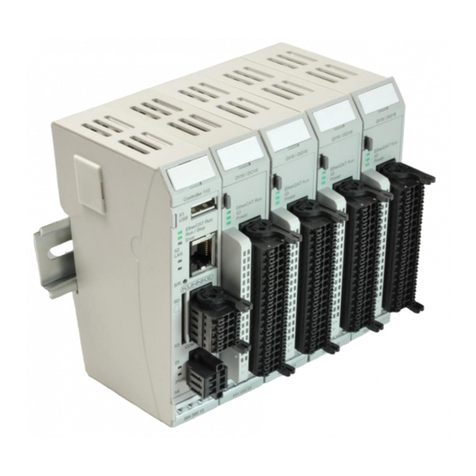
Kendrion (Villingen) GmbH Operating Instructions 77 500..B.. Last updated: 12 Dec. 2013 Page 2
Contents
1.General information .............................................................................................................................. 3
1.1Introduction............................................................................................................................................ 3
1.2Standards and directives....................................................................................................................... 3
1.3Manufacturer’s liability........................................................................................................................... 3
1.4Declaration of Incorporation (in accordance with Annex II, part 1, Section B of Machinery Directive
2006/42/EC)........................................................................................................................................... 4
2.Safety...................................................................................................................................................... 5
2.1Safety and warning symbols / Safety information ................................................................................. 5
2.2Intended use.......................................................................................................................................... 5
2.3General safety information..................................................................................................................... 6
2.3.1Installation.......................................................................................................................................... 6
2.3.2Start-up.............................................................................................................................................. 6
2.3.3Operation........................................................................................................................................... 6
2.3.4Maintenance and repair..................................................................................................................... 7
3.Emissions............................................................................................................................................... 7
3.1Noise...................................................................................................................................................... 7
3.2Heat ....................................................................................................................................................... 7
3.3Electromagnetic compatibility................................................................................................................ 7
4.Product description ............................................................................................................................ 10
4.1Operating principle............................................................................................................................... 10
4.2Design.................................................................................................................................................. 10
5.Installation............................................................................................................................................ 12
5.1Mechanical installation......................................................................................................................... 12
5.1.1Brake shaft (13) installation............................................................................................................. 12
5.1.2Mounting the brake module to the motor......................................................................................... 13
5.2Installation of accessories (not applicable to the brake shaft (13)) ..................................................... 14
5.3Electrical connection and operation..................................................................................................... 15
5.3.1DC power supply ............................................................................................................................. 17
5.3.2AC power supply.............................................................................................................................. 17
5.3.3Electrical connection of brake modules with microswitch (27)........................................................ 18
5.4Set-up and start-up.............................................................................................................................. 18
5.4.1Manual brake release...................................................................................................................... 19
5.5M4transmissible torque adjustments................................................................................................... 20
6.Maintenance......................................................................................................................................... 21
6.1Checks and service ............................................................................................................................. 21
6.2Brake module removal from motor and replacement of component parts.......................................... 22
6.3Microswitch (27) adjustment (only applicable to brake modules with microswitch (27))..................... 23
6.4Brake shaft (13) removal ..................................................................................................................... 24
7.Motor design........................................................................................................................................ 25
8.Driven components, balancing.......................................................................................................... 26
9.Condition at delivery........................................................................................................................... 26
10.Troubleshooting.................................................................................................................................. 27
11.Definitions............................................................................................................................................ 28
12.Technical specifications..................................................................................................................... 28
13.Revision history .................................................................................................................................. 29
Document information:
Issued by: Kendrion (Villingen) GmbH Division: Industrial Drive Systems
Replacement for document: - Replaces the issue dated: 2 July 2012
Type of document: Translation of German operating Document status: Released
instructions BA 77 500..B..
Designation of document: BA 77 500..B.. Englisch




























